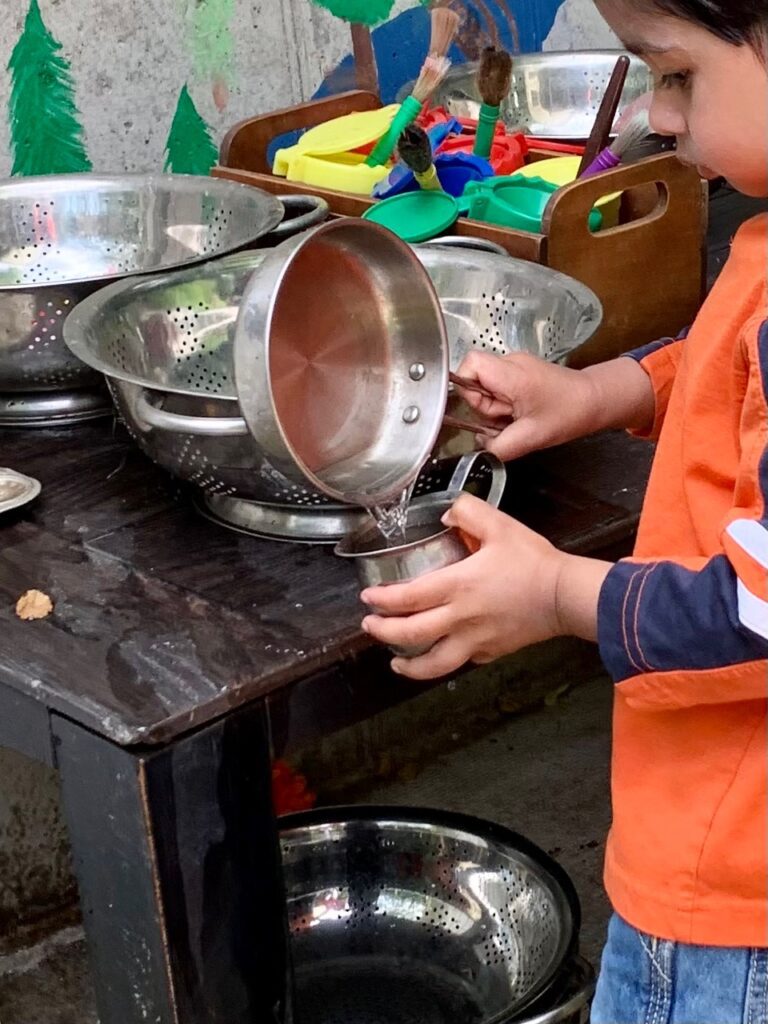Kindergarten Ready With Summer Water Play

It’s another 90-degree July day and we've taken a deep dive into water play to keep our budding mathematicians as cool and contented as possible.
Children are naturally drawn to water, which fosters curiosity, imagination, investigation, and experimentation. This is science, technology, engineering, and math all rolled into a calm afternoon of playful learning!
Math might not be the first thing that comes to mind when you think about water play, but water presents many opportunities to explore one of the main areas of mathematics: measurement!

When children empty smaller cups into larger cups or bowls, they begin to learn which container holds more and which container holds less. They can also use a cup as a unit of measurement and see how many cups it takes to fill the larger bowl.
Water play is always developmentally appropriate, regardless of a child’s physical condition, age, language, gender, or culture.
When children are engaged in water play, they tend to lose themselves in the activity and spend long periods of time experimenting and playing. This helps children develop focus. Any activity that requires sustained focus will increase the attention spans of young children, sharpen their problem-solving skills, and prepare them to solve more complex problems as they move on to kindergarten and elementary school.
Open-ended water play also presents opportunities for children to use both sides of the brain as they problem-solve. When children are allowed to explore and problem-solve in any manner that they choose, they become more creative as they try out new ideas.
This is an example of executive functioning at work. Executive-function skills help us create a plan and troubleshoot when necessary as the plan is carried out.

To stave off boredom and stimulate the imaginations of our early learners, we rotate new tools into our water play on a regular basis.
Here are just a few of the tools you can add to the mix to keep young brains stimulated and engaged:
- Throw some ice cubes into the water and give the children slotted spoons to fish them out.
- Use yogurt, coffee cream, sour cream, or dip containers for volume and capacity investigations.
- Scatter sponges around the water-play area. This often leads to activities such as washing the bikes, baby dolls and plastic animals in our sand play area.
- Use styrofoam meat trays and toy boats to transport plastic animals in water.
- Funnels, soup ladles and turkey basters are also big hits.
- Condiment squeeze bottles are great for building grip strength and strengthening other muscles in little hands.
Whenever children are playing with water, they are exploring mathematical concepts such as volume, capacity, size, and shape.
Don’t forget to keep children hydrated on these hot days! When children get irritable, they may be dehydrated. Lots of water, popsicles, and ice cubes will make the long, hot days of summer more tolerable for everyone.

There are many good reasons to incorporate water-play stations into your outdoor play space. It's a fun, refreshing pastime that will reinvigorate the children on muggy summer afternoons, and it's chock full of learning and skill-building opportunities.
Head on over to our Find an Activity page for more kindergarten-readiness fun. While you're there, be sure to check out our Paint With Water and Water-Bottle Independence activities!